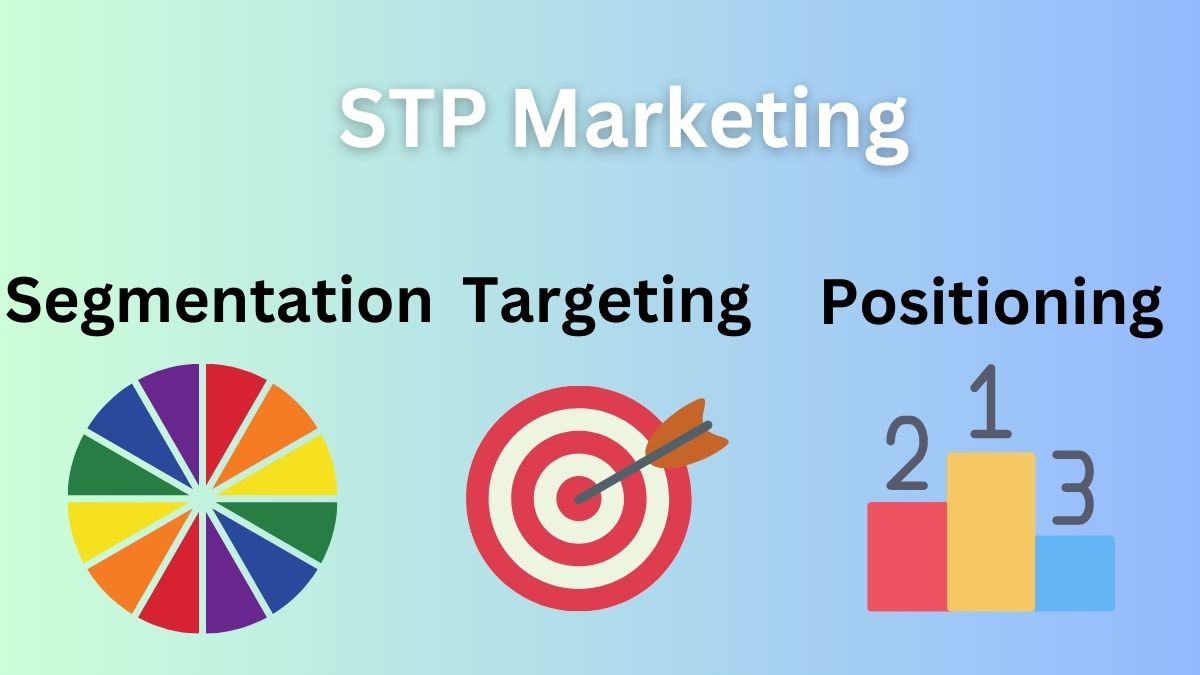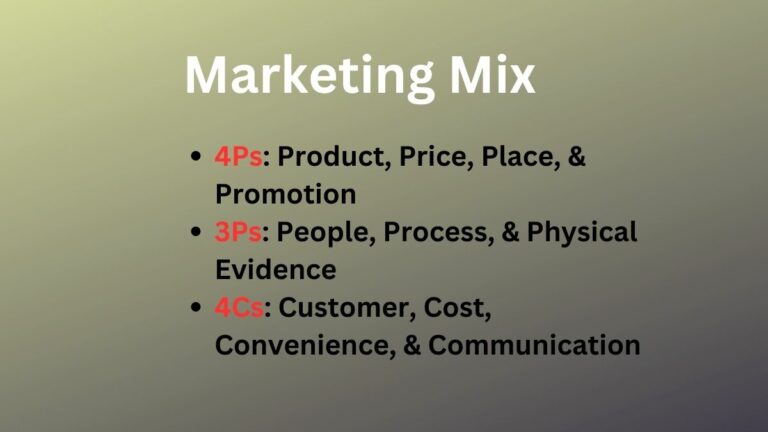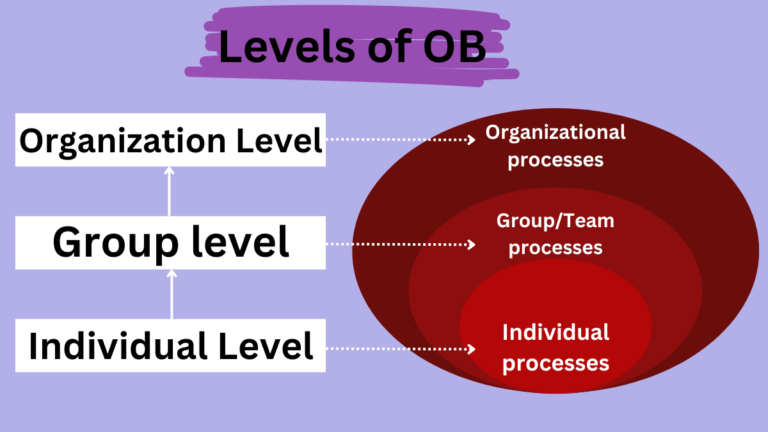What is STP Marketing Model? Definition, Process, Examples, & Pros/Cons
Most businesses make mistakes when they try to sell products directly to customers i.e. they do not try to understand what the customers need, what they want, and what their preferences are.
Today successful businesses are based on customer-focused marketing strategies. And, a business that does not consider the customer’s account would not sustain itself in this competitive business setting.
This is where the STP model i.e. segmentation, targeting, and positioning has played its important role. It is significant that companies must first identify their target market and then design strategies to position their products.
It helps you to identify your target audience, make aware your audience of how your products are beneficial for them, and how your product is different from other brands. So, let’s dive into the world of the STP marketing model.
What is STP Marketing?
The STP marketing model, the full form is Segmentation, Targeting, and Positioning model, is a marketing strategy that helps you to identify the relevant market segments, choose the right target market, and create a unique position for your product or brand in the consumers mind or the market.
It is simply the modern marketing approach. Traditionally, where businesses were in product-focused marketing but STP is now a customer-focused marketing approach.
At its core, what the STP model does is – it first divides a big market into different consumer groups, then evaluates each of the consumer groups selects the best market segment and employs a positioning strategy to build a distinct place for the product in the market.
Gaining a deeper knowledge of your ideal customers and how to reach them is easier with the help of this marketing strategy. In other words, your marketing campaigns will be more successful if they are more customized and specifically targeted.
STP Marketing Process
With the segmentation-targeting-positioning model, you can divide a heterogeneous market into various small segments that share common characteristics, select a desired market segment you want to target, and position your offering in consumers’ minds.
Let’s understand how the segmentation-targeting-positioning marketing model works. This the three-step process, they are:
Segmentation
Market segmentation is the process of dividing a market into different distinct consumer groups where each consumer group shares unique characteristics from other groups.
Segmentation aims to identify various market segments having distinct characteristics from which any market segment you can choose as your target market.
With segmentation, you can better understand your audience and communicate your product features, usage, and benefits that most appeal to them.
There are several ways you can segment the market, but the most common methods include four. They are:
- Demographic Segmentation – This involves dividing the market based on factors like people’s age, gender, income, occupation, family structure, etc.
- Geographic Segmentation – This includes dividing the market based on the factors like region, state, country, city, climate, postal code, etc.
- Psychographic Segmentation – This includes dividing the market based on consumers’ personalities, attitudes, lifestyles, interests, social classes, etc.
- Behavioral Segmentation – It is dividing the market based on the behavior consumers show while interacting with your brand and products. Factors include – benefits sought, purchasing behavior, usage rate, etc.
Instead of focusing on the larger market, you can focus on a specific segment of the market with relevant marketing strategies that best match customers’ expectations.
Targeting
Market targeting refers to the activity of choosing the right market segment out of the available market segments. It is simply choosing the right target market.
Once you have identified various market segments in the segmentation step, your next task in the STP process is to select one that has the greater potential for your business. Also, you should consider that your business should have the capacity and resources to grab the potential.
A target market is one that has the best profit and growth potential you aim to sell the products or services. The following are the key factors you should take into account while choosing the right market segment
- Size of the Segment – The size of the market segment you choose should be as desired by your company.
- Growth – The market segment you choose should have growth characteristics.
- Structural Attractiveness – The market segment should also have the quality to offer long-term benefits to the business.
- Objectives and Resources – The segment should also match your company’s objectives and available resources.
By keeping in mind all these four factors, you can choose the right market segment for your business. Once you select your target market, the next step in the STP marketing process is to develop a positioning strategy for your product.
Positioning
Product positioning refers to the activities you do to create a unique position for your product in the consumer’s mind. With positioning, you can create a unique position for your particular product as well as the brand i.e. company as a whole.
With good product positioning, what you can do is – you can better position your product in the market, and consumers will perceive your product differently from the competitors, and your product image will remain consistent.
This positioning will let your customers view your brand in a unique way by associating feelings, emotions, and sentiments with it. You can position your product in different ways, the most common strategies include.
- Price-Based Positioning
- Quality-Based Positioning
- User-Based Positioning
- Use-Based Positioning
- Characteristics-Based Positioning
- Value-Based Positioning
- Occasion-Based Positioning
- Competitor-Based Positioning
With a careful understanding of consumers through segmentation, and choosing the best target market through targeting, you can use any of these positioning strategies to build a distinct position or image of your product in your target market.
Advantages and Disadvantages of STP Marketing
There are several advantages and disadvantages that the STP model can offer to your business. Some common are mentioned below:
Advantages:
- Choose the Right Market – The STP will allow you to choose the right market. By a clear understanding of different consumer groups’ needs, wants, and preferences you can choose one that best matches your objectives and resources.
- Customer Satisfaction – As of now you are aware of your target market and selected the one the STP process will further help you to design the optimal marketing mix i.e. right product, right pricing, right promotion, and distribution in the right place at the right time generating more customer satisfaction.
- More Sales and Profits – As the product is personalized and targeted to only selected market segments the expected sales will be generated and hence the profits also.
- Less Wastage – The STP process allows businesses to put their money and effort in the right place at a tight time resulting in less waste of time, effort, and capital.
- Marketing Efficiency – With STP companies know who their ideal customers are and what their actual pain points are this enables them to design the right marketing plans and strategies.
- Helps In Decision Making – The STP model further helps companies to make the right decision either about products or operational decisions as it makes them aware of necessary market information.
Disadvantages:
The STP model offers various benefits to businesses, however, it also has some drawbacks that should be noted.
- Costly – The STP process is actually a costly process. You have to invest upfront a lot of money and effort in market research and data analysis.
- Time-Consuming – Along with being expensive the STP model is also a time-consuming process. Doing market research and data analysis will require more time to get the right information.
- Needs Expertise – Not everyone can understand the process of STP and how it works. It requires some expertise to generate the best results from this.
- Competitive Environment – The STP model will may not always generate the expected results as it will be affected by the competitive and changing business environment.
Examples of STP Marketing Model
There are a lot of companies you can find that are successful in adopting the STP model of marketing. Let’s look at some of them.
iPhone
Apple’s iPhone is the product I believe is most successful in applying the STP process. Now, the iPhone is the most popular smartphone in the world. Let’s see how Apple applies the STP marketing model.
- Segmentation – It segments the market based on people’s income, lifestyle, and quality preferences.
- Targeting – It usually targets people who are affluent have the desire to use quality smartphones and wish to look stylish.
- Positioning – Apple now is successful in positioning its iPhone as the best and most stylish smartphone. Often it does not sell only quality smartphones but also status is also a key image it has earned.
McDonald’s
Although being is one of the most popular fast-food companies, McDonald’s does focus on middle-class people. Similarly, it, however, offers quality products but is accessible to everyone.
- Segmentation – McDonald’s divides the market based on the consumer’s income, lifestyle, religion, and location.
- Targeting – McDonald’s targets people who are looking for quick meals at affordable prices.
- Positioning – McDonald’s has positioned itself as a perfect restaurant for families on the go at an affordable price.
In Conclusion…
Hence, STP marketing is simple to define, easy to implement, and an effective marketing tool for companies to understand the market, design marketing programs, and increase sales and profits. While implementing the STP in your business make sure to apply all its steps carefully.
Read Next: The 7 Ps of Marketing Mix
Sajan Kushmi is a content writer with more than 4 years of experience. He holds BIM Degree. He write on the topics related to Management, Marketing, and Entrepreneurship.






